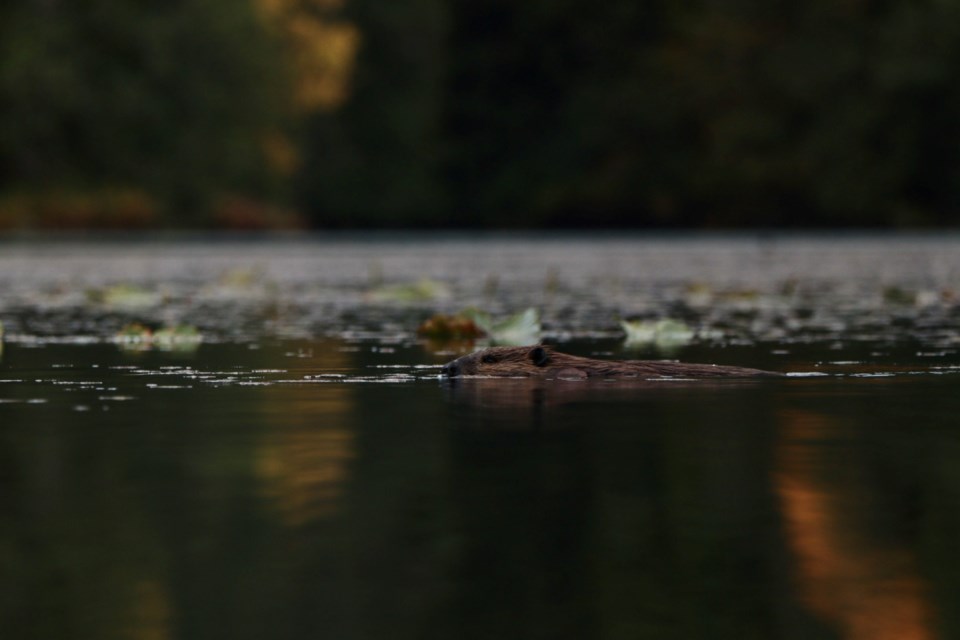It’s difficult to describe the sensation of coming across a North American beaver for the first time to Whistler locals. These rodents can often be seen as more of a nuisance than a gift (particularly if your house gets in the way of their latest engineering endeavour!). But look beyond, and you discover beavers are undoubtedly some of the most successful mammals on the planet.
The key to beavers’ success is their ability to shape their environments to their needs. It’s borderline obsessive for them, and is quite simply coded into their DNA! Experiments have demonstrated young beavers can be induced to attempt to build dams simply from the sound of water—despite never being taught! And what marvels these structures are. Beaver dams can stretch for hundreds of metres, and some historic maps suggest they were once so numerous they transformed entire watersheds and covered vast swathes of the continent.
But despite their numbers, they’re elusive creatures to get good photos of—a point I was sure to think to myself as I headed down to the lake before dawn with my headtorch. At sunset in fall, they are everywhere. Simply walk down to your nearest beaver-occupied lake and sit by yellow pond-lilies (a popular snack for beavers) and you are sure to see one pop its head up. But sunset does not make for great lighting, and at dawn, they disappear into their lodges, safely tucked away from the sight of predators (or photographers!). Armed with this knowledge, and nine days of failed attempts already, I gloomily noted the lighting was looking good for a photo, which would undoubtedly never come to fruition. I sat down and waited. Perhaps I’d get a false alarm. It’s happened before with a river otter, and most convincingly, a muskrat I had initially mistook for a beaver kit.
Time passed. It was getting late, and the glow of dawn was giving way to a slightly overcast day. An 11th morning stakeout was not going to be such a terrible way to start the day tomorrow, I mused. As I cast one last glance around the lake, a flicker of movement grabbed my attention. Ripples unmistakably moving towards me around the corner of the lake; and not just ripples, they were getting larger. I flung myself to the ground for a water-level shot as the beaver emerged through the reeds. I counted under my breath for a second until it had fully come into focus and pressed the shutter. I looked back down my viewfinder for a second shot, before hesitating and putting down the camera. Laying down on the ground, I momentarily watched the beaver, before, with a splash of its tail, it was gone.
As I look at my camera later that day I feel a twinge of disappointment—it’s not quite the photo I’d hoped to get. But for me, the moment was more special than any photo. That feeling of watching a beaver at dawn, feet away from where I sat at shore, will last a lifetime; and I could finally tick Canada’s most remarkable mammal off my list.
Naturespeak is prepared by the Whistler Naturalists. To learn more about Whistler’s natural world, go to whistlernaturalists.ca.




